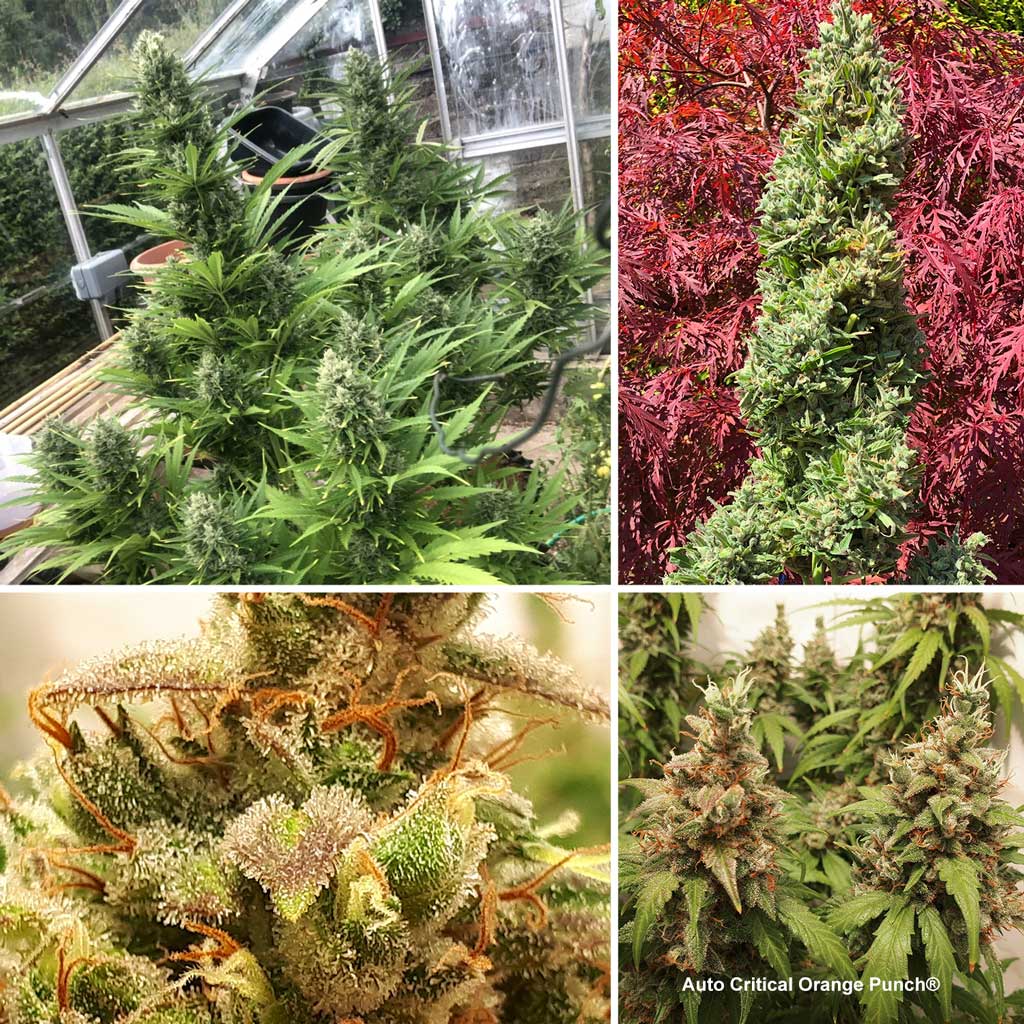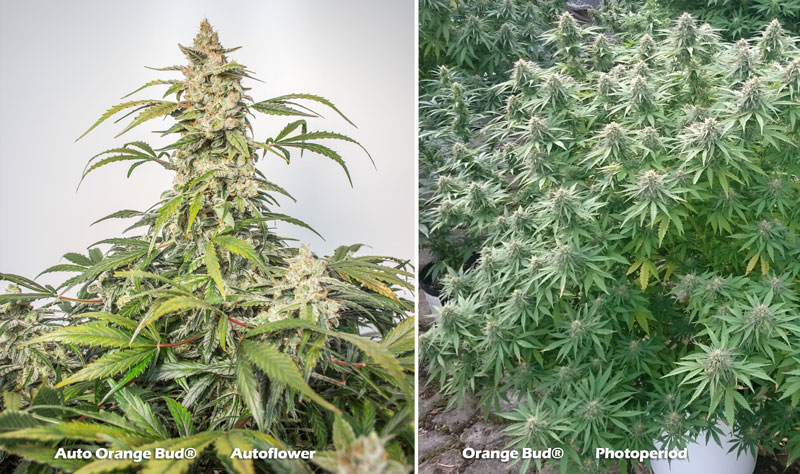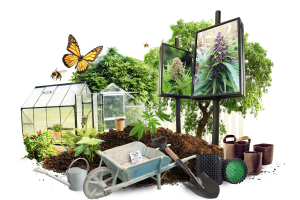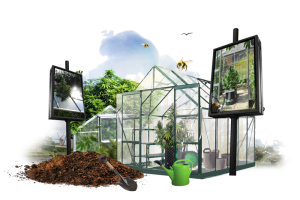How to move your indoor cannabis plant outdoors

Many outdoor growers germinate and start their outdoor plants indoors for a few weeks before gradually acclimatising them to outdoor conditions. This has several advantages and can allow larger eventual harvests. If you want to move your indoor cannabis plant outdoors you will need to understand the timing as well as the process of how your plant responds to the change of environment.
Benefits of moving indoor cannabis plants outdoors
It may seem illogical to start your outdoor plants indoors. Buts lots of professional and hobby growers do just that, and for good reasons too. Indoor germination offers maximum control of conditions and maximum protection for your precious seedlings while they are young and at their most vulnerable. You may never have considered starting indoors and then moving your indoor cannabis plant outdoors. But there are some compelling reasons to do so.
To avoid the last blast of winter
Put your cannabis plants outside too early and an unexpected frost or storm could finish them off. By keeping your outdoor cannabis plants inside you protect them from the last remnants of winter weather. Once the storms have passed, you can gradually acclimatise your plants to outdoor life. Putting your indoor cannabis plants outdoors too early is one of the more common errors, especially by less experienced outdoor growers.
Give your plants a head start
Germinating your cannabis seeds indoors and growing your seedlings under 24-hour artificial light for a few weeks is a great way to give your plants a head start. Remember, early season outdoor weather can often be cool and cloudy. Starting your plants indoors, and moving them out later, allows your plants the equivalent of 24-hour midday sun for the first few crucial weeks. This gives them the best possible start which should translate into heavier eventual yields.
To create extra space
Sometimes the over-ambitious indoor grower may have the luxury problem of too many cannabis plants for the grow tent. In these circumstances, rather than throw plants away you may prefer to allow the excess plants the chance to grow outdoors instead.
To avoid an indoor pest infestation
Although growers do their utmost to prevent indoor pests they can sometimes take over uncontrollably. If this happens, growers sometimes clear out their grow room completely, remove all plants and thoroughly disinfect the area. Rather than throw the plants away, some growers will gradually acclimatise their plants for outdoor life and allow the plants to take their chances in the great outdoors.
To initiate bloom
Some outdoor growers like their plants vegetative growth to be done indoors (avoiding the poor early season weather) and then take them outdoors for bloom.
After the spring equinox (March in the northern hemisphere, September in southern hemisphere) the days get longer than the nights. If the climate is warm enough at your latitude you can put your indoor cannabis plants outside. The long daylight hours should prevent them from going into bloom.
If you want to bring your indoor cannabis plants outdoors to initiate bloom then you may prefer to wait until after the summer equinox (around mid/late June in northern hemisphere, mid/late September in southern hemisphere). At this point the days start to get shorter than the nights.
For superior lighting
Some outdoor growers believe that the suns natural spectrum, complete with UVA & UVB, is the best for bloom and subsequent bud quality, aroma and taste. Such growers often cultivate their plants indoors during the veg growth stage and place their plants outdoors for bloom.
To save costs
Growing indoors uses a lot of electricity which some growers struggle to afford. Germinating your cannabis seeds indoors and growing them vegetatively under low power lights costs relatively little. Instead of needing a powerful indoor light for bloom, which can be costly to purchase and run, the plants can instead be bloomed outdoors.
To deal with technical issues
If you suffer a serious grow room issue, light failure or security concern you may need to close down your indoor grow and move your indoor cannabis plants outside.

Risks of moving your indoor cannabis plant outdoors
Once you understand the reasons and principles of moving and acclimatising indoor cannabis plants outdoors you should be able to avoid any shock or stress to your plant. However it’s worth considering the risks of moving indoor cannabis plants outside:
Pests and disease
An indoor grow room is (or at least it should be) an oasis free of pests with optimised light. When you put your indoor cannabis plants outdoors you face a risk of pests. Normally this is nothing to be too worried about, but it’s something to be aware of.
Bloom begins to early while the plant is immature
If daylight hours are too short you risk your cannabis plant going into bloom before a sufficiently long period of vegetative growth has been completed.
Environmental stress
In the great outdoors your finely honed indoor conditions are replaced by those from mother nature. If you have prepared your timing and planning well, your plants will acclimatise easily from indoors to outdoors. But get the timings wrong and your plants may face temperature, humidity or rainfall extremes which can be difficult for them to cope with. Keep an eye on your plant if outdoor conditions take a turn for the worst.
Plant reverts from bloom to veg
If you have a flowering photoperiod plant that you take from an indoor grow into an outdoor location with long daylight hours the plant may revert back to vegetative growth. This is known as vegetative regeneration, its a stressful and time consuming process which results in a lot of weird looking growth deformation.
Growers also ask:
Do cannabis plants grow better with sunlight or artificial light?
It depends on the outside weather! Growing cannabis plants under sunlight produces superb results but not all growers can rely on optimised outdoor grow conditions. That’s what many growers prefer an indoor grow room.
How do you acclimatise a cannabis plant to full sun?
Cannabis plants need little adaptation to growing in full summer sunshine, they thrive under such conditions. However freshly germinated cannabis seedlings are delicate and can benefit from some initial protection from intense heat and sun. Perhaps allow the seedlings a few days to establish deeper roots before exposing them to full summer sun, and ensure they have sufficient moisture at root level. This is discussed in more detail further below with some practical suggestions.
Do indoor vs outdoor cannabis plants need a different feeding schedule?
Sometimes they do, it depends on how they are grown. Outdoor cannabis plants rooted directly into moist, nutritious earth may not need any/much feeding at all. They can absorb everything they need from the soil. Indoor grown plants in containers are totally dependent on the grower for supply of water and minerals. The experienced grower can read the nutritional/water demands from their plant and meet them without over feeding or under feeding.

When to move your indoor cannabis plant outdoors
Often growers will move their indoor cannabis plant outdoors as soon as they have the confidence that the outdoor weather is fine and stable. You wouldn’t want to move your indoor cannabis plant outdoors if there is a risk of frost or storms. On the other hand, you don’t want to keep your plant indoors too long when warm and sunny outdoor weather has arrived.
Growers also ask:
At what temperature is it safe to put houseplants outside?
Ensure that the last frost has passed. Minimum night-time outdoor temperatures of around 10ºC should allow most strains to cope well. Minimum night temperatures of 15ºC are even better.
Should I bring my cannabis plant in at night?
Not unless you are expecting severe weather or temperatures. Cannabis evolved naturally to survive outdoors during the evening. Note that if you do bring an outdoor plant back indoors you also risk introducing pests to your indoor grow room too. That’s why many prefer to only plant their indoor cannabis plants outside once good weather conditions have arrived and are fully stable.
Should I put my plants outside when it rains?
Cannabis plants cope well with rain, it’s part of outdoor life and outdoor cultivation. Don’t worry too much about rain on your outdoor plants unless a torrential tropical downpour is expected. In cases of severe weather, serious outdoor growers cover their plants with a tarpaulin or move them under some shelter (e.g. greenhouse) until the bad weather has passed.

How to move your indoor cannabis plant outdoors
The four most common situations for growers to move an indoor cannabis plant outdoors are shown below. One general principle that can help you and your plants is gradual acclimatisation. Many growers start putting their indoor cannabis plants outdoors for just an hour or two a day, gradually increasing the duration over the period of a week or so. This helps the plant to adapt to new conditions gradually and minimises the stress of a sudden shock caused by a rapid change of environment.
Case 1: Moving an indoor cannabis plant outdoors to continue vegetative growth
Risks: One of the main risks of taking a young plant outdoors to continue veg growth is that the plant will receive fewer daylight hours and prematurely go into bloom.
Suggestions: The longest days are around the summer equinox, though many growers would aim to get their plants outdoors a few weeks earlier than this, weather permitting. Take a quick look at google to find out the length of the days at your latitude and put your plants out when the days are at least 14 hours long.
You can adapt and gradually acclimatise your indoor cannabis plants before you put them outdoors. If your plants are receiving 18 hours of indoor light, and the days only have 15 hours of daily light, you may prefer to decrease the indoor light hours gradually down to 15 before you put your plants out.
Case 2: Moving an indoor photoperiod cannabis plant outdoors to begin bloom
Risks: If the days are too long your plant will want to grow vegetatively instead of bloom
Suggestions: Photoperiod plants will naturally start outdoor bloom when the days have 12-14 hours of daylight. You may wish to start decreasing the amount of indoor light given to your plant. Don’t worry if your plant shows initial signs of bloom. Put your plant outdoors, the outdoor day lengths should be close to the indoor light hours. Remember to avoid vegetative regeneration in these situations you should not put the plant outdoors when daylight hours are long.
Related:
How to grow cannabis outdoors in the UK
Case 3: Moving indoor cannabis plants outdoors for a short temporary period
Risks: Plants may need to adapt to high outdoor UV conditions
Suggestions: Gradually acclimatising your plants to outdoor lights advised if the plants/seedlings are young. This can be done by allowing the plants just a couple of hours of outdoor light initially, and gradually increasing. Or you could create some semi-shaded area for your plants to get used to outdoor light intensities
Case 4: Moving an autoflowering plant from indoors to outdoors
Here you don’t need to worry too much about the change in daylight hours from indoors to outdoors. Autoflower seeds produce plants with no photo dependance. That means you can put your autos outdoors as soon as the temperatures and weather conditions are suitable. That could be the start of spring or even the middle of summer! Autoflower seeds offer great flexibility to indoor and outdoor growers. Many outdoor growers routinely plant a few autoflowering cannabis seeds alongside their photoperiod feminised seeds.
Related:
Autoflower vs feminised outdoor cannabis cultivation
What about starting cannabis outdoors and moving it indoors?
Occasionally growers will need to take an outdoor cannabis plant inside. This can be to avoid extreme weather, pests or unwanted human attention. Two of the main risks are importing pests into your grow room and/or inadvertently flipping it into veg/bloom.
You may want to set your indoor grow light to give the plant the same amount of daylight as she was getting outdoors. This avoids the problem of your plant transitioning from veg to bloom (or vice versa).
One other difficult problem is that of pests. Some pests, like greenfly/aphids can spread rapidly indoors without any natural predators. That can cause problems for any indoor plants that get contaminated. Do your best to check for, and remove, any pests before your plants are brought indoors. This can be a time consuming process!
Find the best cannabis seeds for your indoor or outdoor grow
Usually the most common reason to take indoor cannabis plants outdoors is when guerrilla growers feel that their plants have reached sufficient size to cope with outdoor weather and permanent outdoor life. With a few basic precautions you shouldn’t face any severe difficulties.
Autoflowering cannabis seeds are a great, easy way to grow cannabis outdoors. Many growers germinate their auto seeds indoors and grow them for 2-3 weeks under 24-hour light before planting outside when the weather is warm and sunny enough. If you prefer to grow photoperiod feminised seeds then the Dutch Outdoor cannabis seed collection contains some of the most dependable and toughest outdoor strains to grow at Dutch (or similar) latitudes.


Basic Guides
Popular varieties
- Auto Blackberry Kush ®
- Auto Blueberry ®
- Auto Brooklyn Sunrise ®
- Auto Cinderella Jack ®
- Auto Colorado Cookies ®
- Auto Daiquiri Lime ®
- Auto Duck ®
- Auto Durban Poison
- Auto Euforia ®
- Auto Frisian Dew
- Auto Glueberry O.G. ®
- Auto Lemon Kix ®
- Auto Mazar ®
- Auto Night Queen ®
- Auto Orange Bud ®
- Auto Think Different
- Auto Ultimate ®
- Auto White Widow ®
- Auto Xtreme ®
- Blue Auto Mazar ®
- Blueberry ®
- Brainstorm
- Bubba Island Kush ®
- C-Vibez ®
- CBD Auto White Widow ®
- CBD Charlotte’s Angel ®
- CBD Compassion ®
- CBD Kush ®
- CBD Skunk Haze ®
- Critical Orange Punch ®
- Desfrán ®
- Durban Poison ®
- Euforia ®
- Freddy’s Best ®
- Frisian Dew ®
- Frisian Duck ®
- Glueberry O.G. ®
- HiFi 4G ®
- Hollands Hope ®
- Jorge’s Diamonds #1 ®
- Kerosene Krash ®
- Master Kush
- Mazar ®
- Meringue ®
- Mokum’s Tulip ®
- Night Queen ®
- Orange Bud ®
- Orange Hill Special ®
- Outlaw Amnesia ®
- Pamir Gold ®
- Passion #1®
- Passion Fruit ®
- Power Plant ®
- Purple #1 ®
- Skunk #11 ®
- StarRyder ®
- Strawberry Cough ®
- Sugar Bomb Punch ®
- The Ultimate ®
- Think Big ®
- Think Fast ®
- White Widow
















